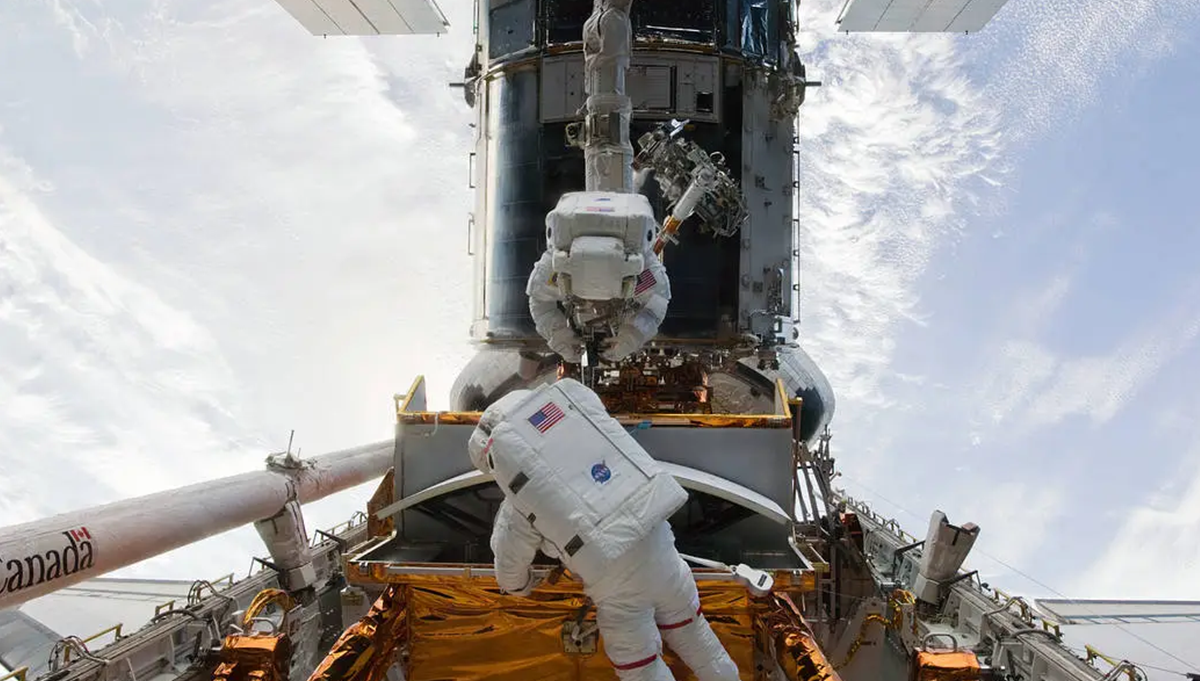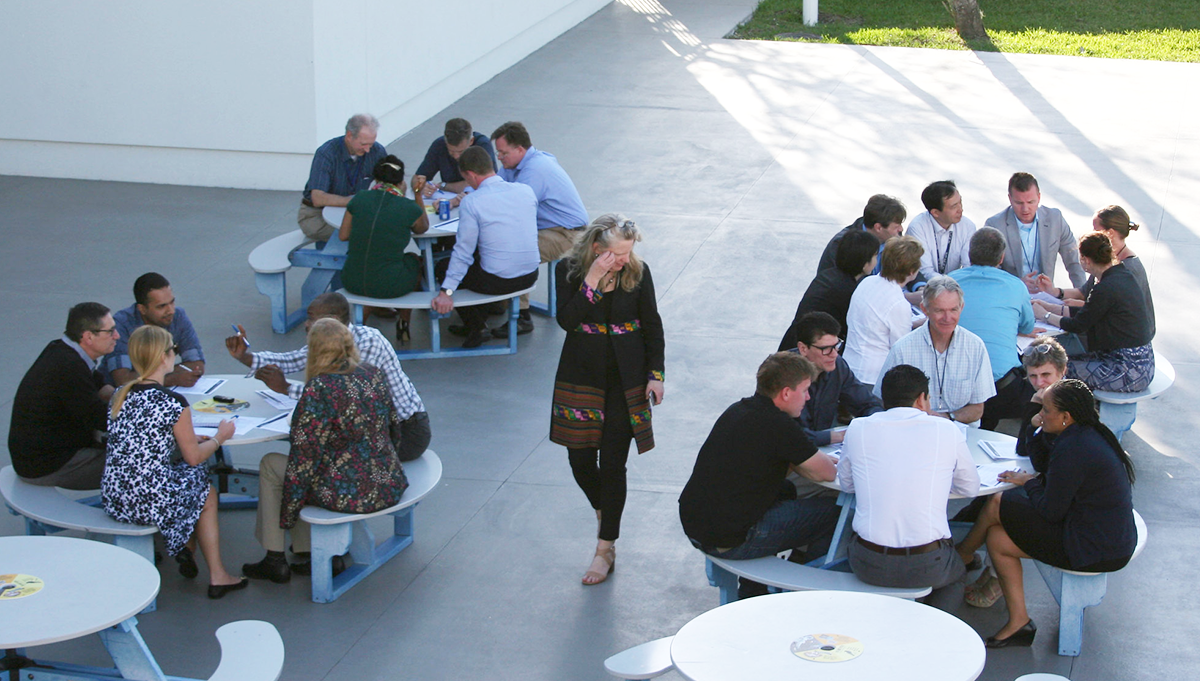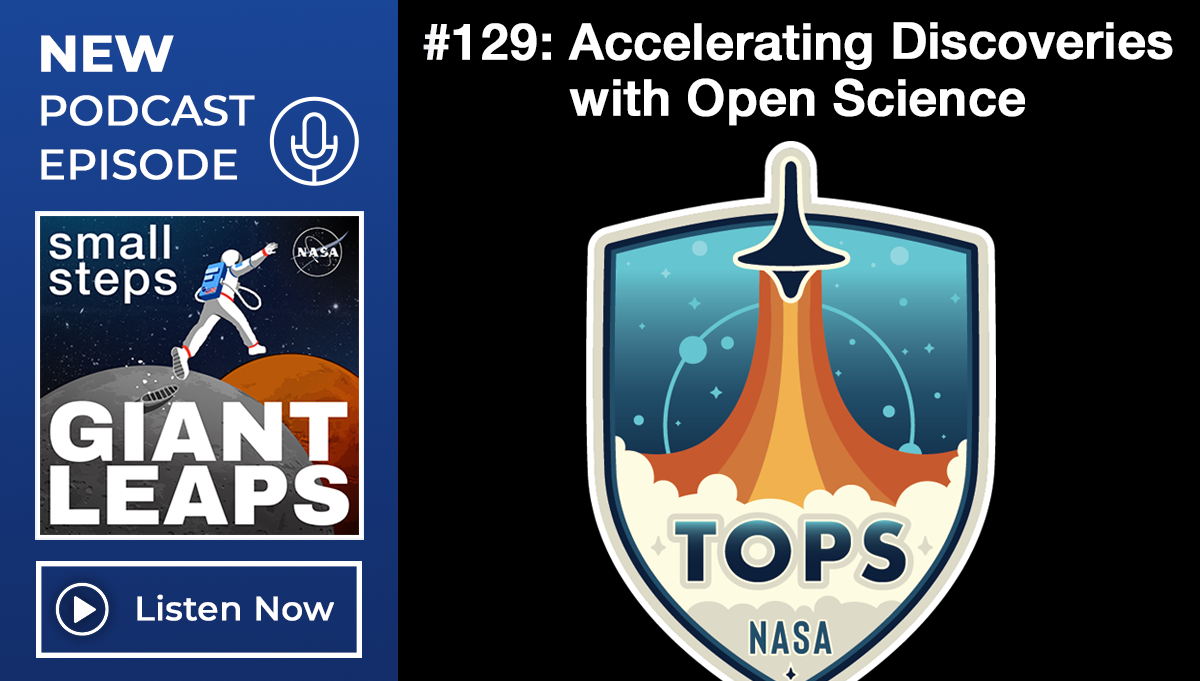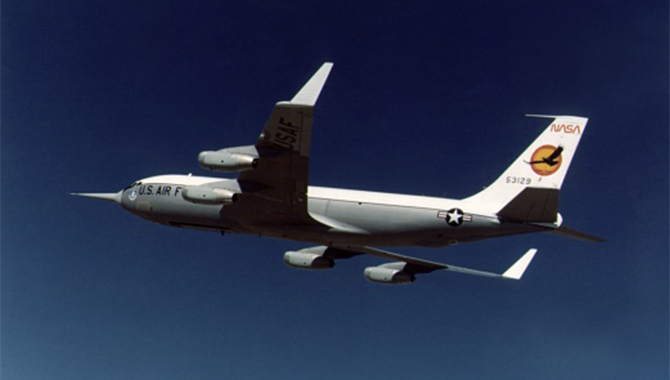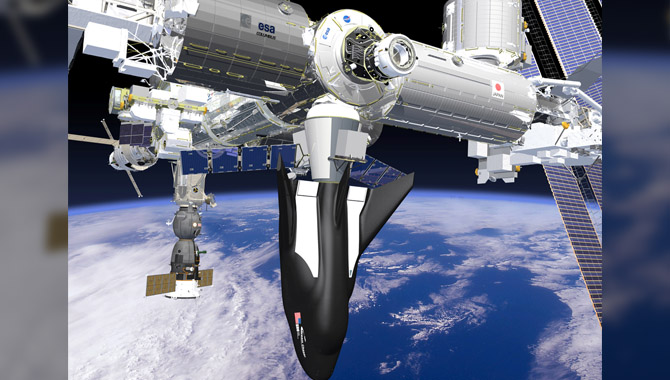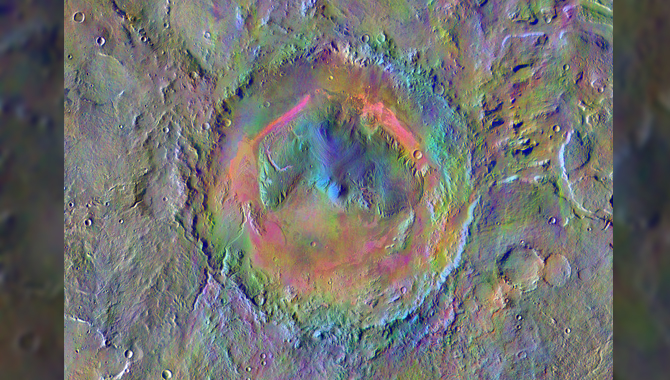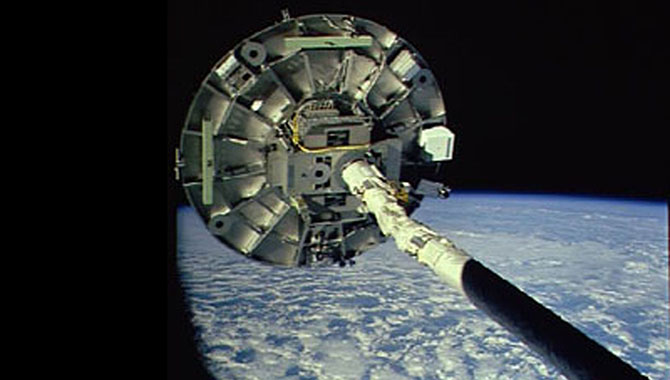
Despite problems with deployment, the Wake Shield Facility 1 was flown at the end of the shuttle’s Remote Manipulator System (RMS) mechanical arm, where it grew several thin films designed to increase the processing speed of advanced electronics.
Photo Credit: NASA
On February 3, 1994, the first joint U.S.-Russia space shuttle mission lifted off from Kennedy Space Center (KSC) and rocketed toward orbit.
One week from today, the International Space Station (ISS)-based One-Year Mission will come to a close. This mission—the first time an American astronaut and a Russian cosmonaut have spent 12 months on the ISS—is ground breaking in its contributions to scientific understanding of the impact of long-duration spaceflight on human physiology. Yet it wasn’t the first joint NASA-Roscosmos mission to study these effects. That distinction goes to STS-60: the 1994 space shuttle Discovery mission commanded by Charles Bolden.
The first U.S.-Soviet on-orbit mission was the 1975 Apollo-Soyuz Test Project (ASTP), which sent three NASA astronauts in an Apollo to rendezvous with two Russian cosmonauts in a Soyuz capsule. Using a co-designed docking module, the two spacecraft successfully docked in orbit.
It wasn’t until 19 years later that Americans and Russians met in space again. Following the collapse of the Soviet Union, the U.S. and Russia began strengthening plans for joint on-orbit initiatives. These plans included cosmonauts flying on the space shuttle, shuttle-MIR dockings, and long-duration spaceflights involving U.S. astronauts on the Russian space station. These efforts would provide the foundation for an international partnership on the ISS.
STS-60 was the first step in realizing these goals. The eight-day mission included five NASA astronauts—Commander Bolden, Pilot Kenneth S. Reightler, and Mission Specialists N. Jan Davis, Ronald M. Sega, and Franklin R. Chang-Diaz—as well as a Russian cosmonaut: Mission Specialist Sergei Krikalev. A veteran of two long-duration MIR missions, during STS-60 Krikalev was involved with several investigations into the effects of a low-gravity environment on humans. The research, which was conducted by NASA’s Space and Life Sciences Division in conjunction with Moscow’s Institute of Biomedical Problems, included neurosensory investigations, inner ear balance studies, and research on the ocular impact of microgravity.
These experiments and others were facilitated by SPACEHAB-2: a commercially developed research facility that expanded the shuttle’s laboratory capacity by 1,100 cubic feet. Like the astronaut’s living quarters, SPACEHAB-2 was pressurized so crew could access and work in it without wearing spacesuits. The research module carried 12 experiments on topics ranging from biotechnology to materials processing to space dust collection.
A primary payload mission for STS-60 was the Wake Shield Facility 1 (WSF-1): a 12-foot-diameter, free-flying stainless steel disk designed to grow thin films used as semiconductors in advanced electronics. The WSF-1, built by the Space Vacuum Epitaxy Center (SVEC; now known as the Center for Advanced Materials) at the University of Houston, was a fully functional spacecraft. The intention was to deploy the WSF-1 from the shuttle once on orbit. It would then use cold gas thrusters to travel roughly 45 nautical miles away from the orbiter, where it would generate an “ultra vacuum” environment in its wake to create thin films made of gallium arsenide (GaAs). High-quality yields of these semiconductor films—needed for electronics such as digital cell phones, high-definition TVs, and fiber optics communications—were hard to produce on Earth, so scientists wanted to determine whether defect-free films could be cultivated in low Earth orbit (LEO) instead. After two days away from the Discovery, the WSF-1 would rendezvous with the shuttle and be retrieved, using the Remote Manipulator System (RMS) mechanical arm, and returned to the payload. This rendezvous technique was intended to inform future shuttle-MIR docking missions.
On the third day of the mission, NASA astronaut Davis used the RMS to successfully grapple and unberth the WSF-1 before cleaning the front of the shield as required. But during the cleaning process, the crew discovered that the spacecraft’s status lights were unreadable, which meant they could not determine whether the WSF-1 was properly configured. As communication interference was also noted, the WSF-1 was returned to its berth.
When the crew tried to deploy the WSF-1 a second time, problems with the spacecraft’s pitch and roll sensors on its attitude control system emerged. Despite attempts to resolve the issues, the WSF-1 was not able to fly separately from the shuttle during STS-60. Ultimately, the team compromised by deploying the WSF-1 at the end of the RMS, where it grew five of the seven planned GaAs films. In doing so, it demonstrated the capabilities of the WSF-1 even though the results were not as impressive as hoped.
On February 11, 1994, STS-60 landed uneventfully on runway 15 at KSC. Despite a failure to fully deploy the WSF-1, the mission had realized its primary goal: the first step in the Shuttle-MIR program had been taken and a new era of human spaceflight collaboration was born.
Read more about the mission in STS-60: A Cosmonaut Flies on the Shuttle from the NASA History Program Office.
Watch a brief movie featuring highlights from STS-60.
View High Above the Earth: a virtual children’s book about the Shuttle-MIR program.


